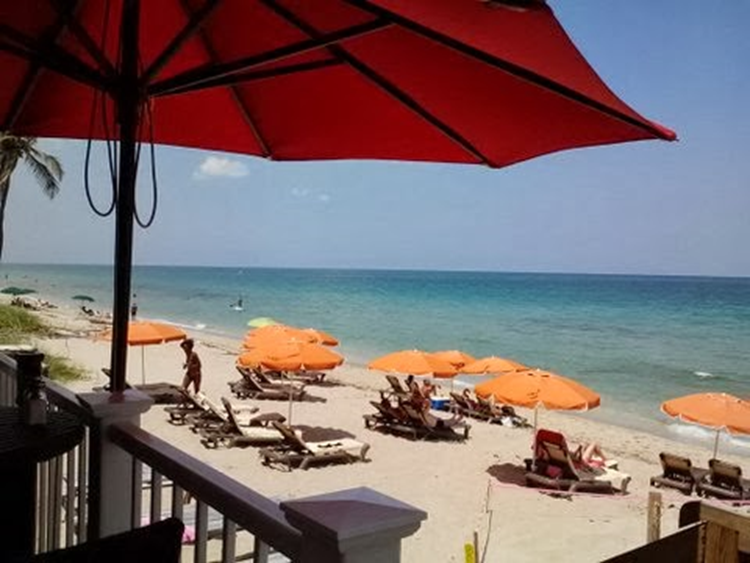Sun Tower Hotel & Suites
2030 N. Ocean Blvd., Fort Lauderdale, FL
954-565-5700
By Jane Feehan
The Sun Tower remains one of the few hotels in Fort Lauderdale that can claim the
beach lies literally out the back door. With a deck and restaurant only feet
off the sand, it draws locals and repeat visitors from afar.
It’s been around since about 1959 when original owner George
A. Zarekas filed a fictitious name or intent to do business as “Sun Tower
Apartments.” Architect of the 22-unit building was Gamble, Pownell and Gilroy
Company. According to The Miami Herald that year, a $235,000 contract was
“let to W. Edward Seese” to build; D.E. Britt served as engineer.
Zarekas came to Florida from Carbondale, Pennsylvania in 1955 where he and wife Marjorie owned and operated the Waymart Hotel and Restaurant. In Fort Lauderdale they also owned the Carib and North Shore motels. The seven-floor Sun Tower was known by several different names over the years. Some referred to it as the Sun Tower Motel or Hotel. It was not pretentious. In fact, the Zarekas would advertise for a couple to run the place while they were away for the summer.
Today it operates as Sun Tower Hotel and Suites. Zarekas, a
World War II veteran who fought at Normandy, died in 2021 at age 98. His wife
died in 2022. Current owners are listed as Sun Tower Investments with a
mailing address in New York City.
The small hotel was upgraded during the COVID pandemic. Not enough can be said about its very casual restaurant, Sand Bar and Grill (or Sand Bar Grill), which serves a tasty breakfast, lunch and dinner on the deck or in a small adjacent room. It’s all about the beach …
Copyright © 2024. All rights reserved. Jane Feehan
Sources
The Miami Herald, Sept. 20, 1059
Fort Lauderdale News Oct. 23, 1959
Fort Lauderdale News, May 6, 1965
Fort Lauderdale News, April 9, 1973
South Florida Sun-Sentinel, Nov. 19, 2021
Legacy.com







































